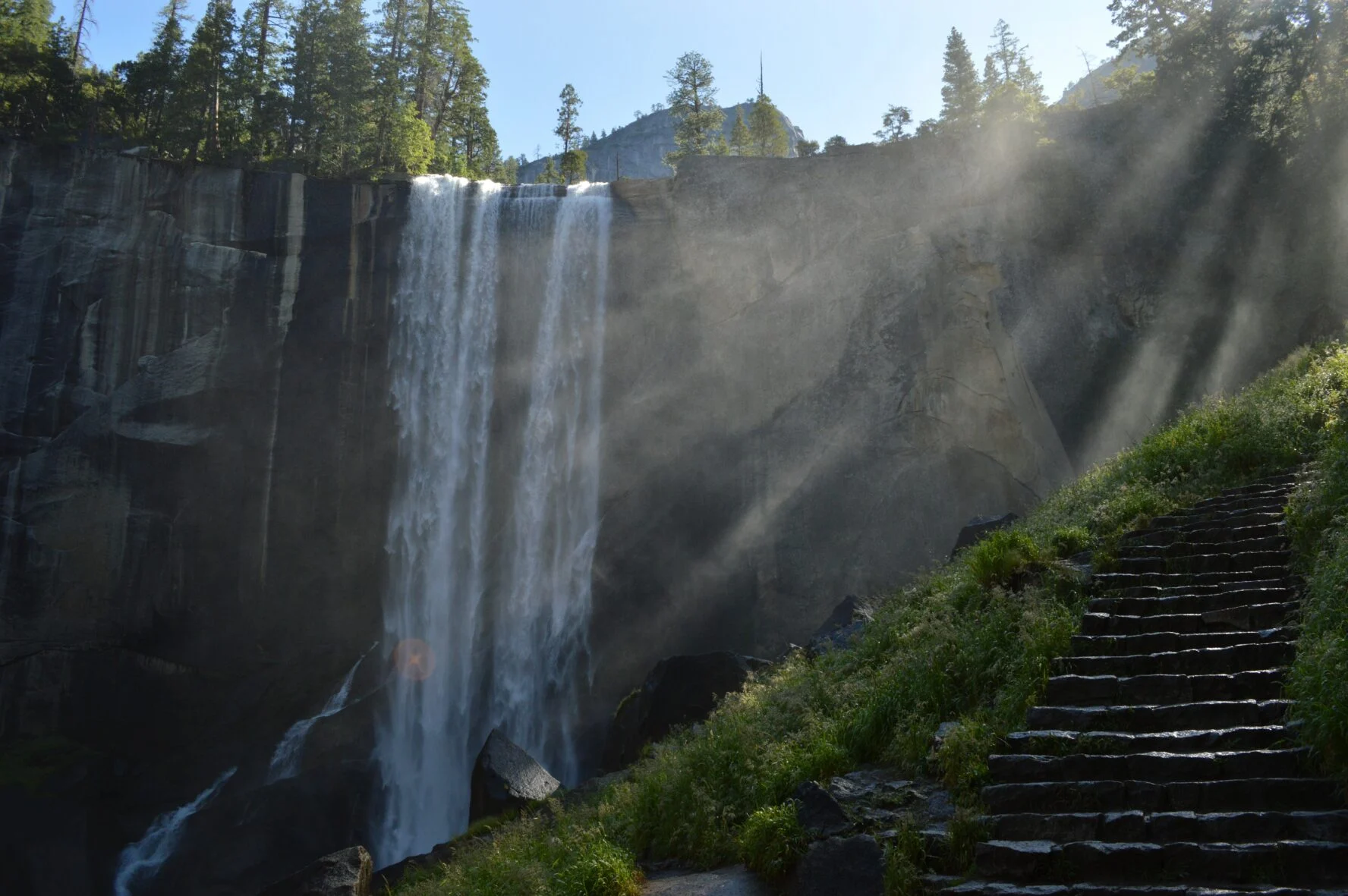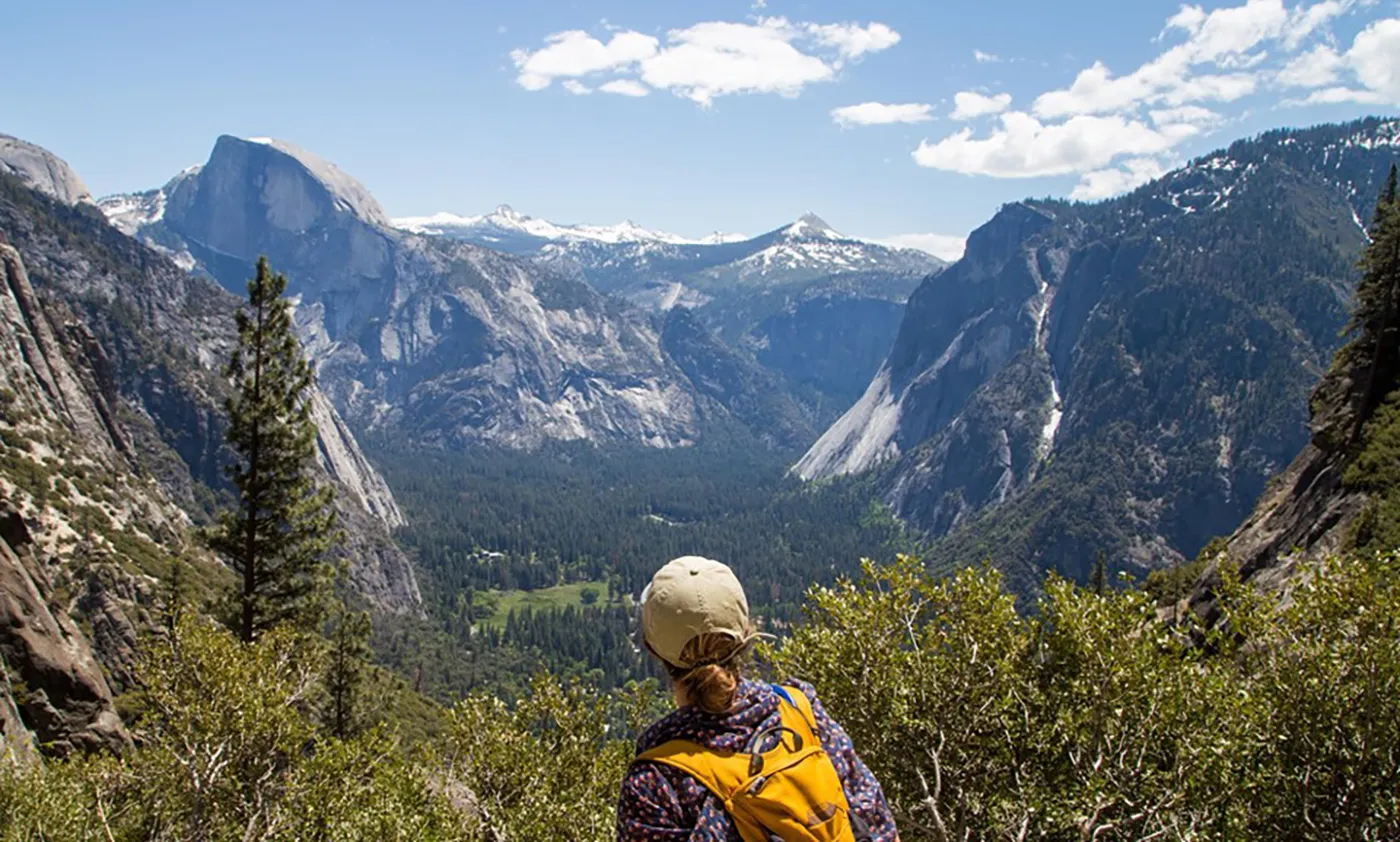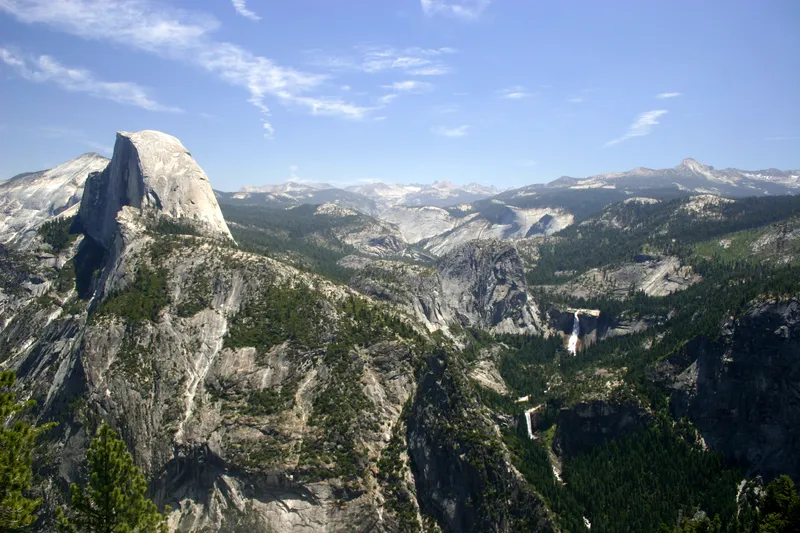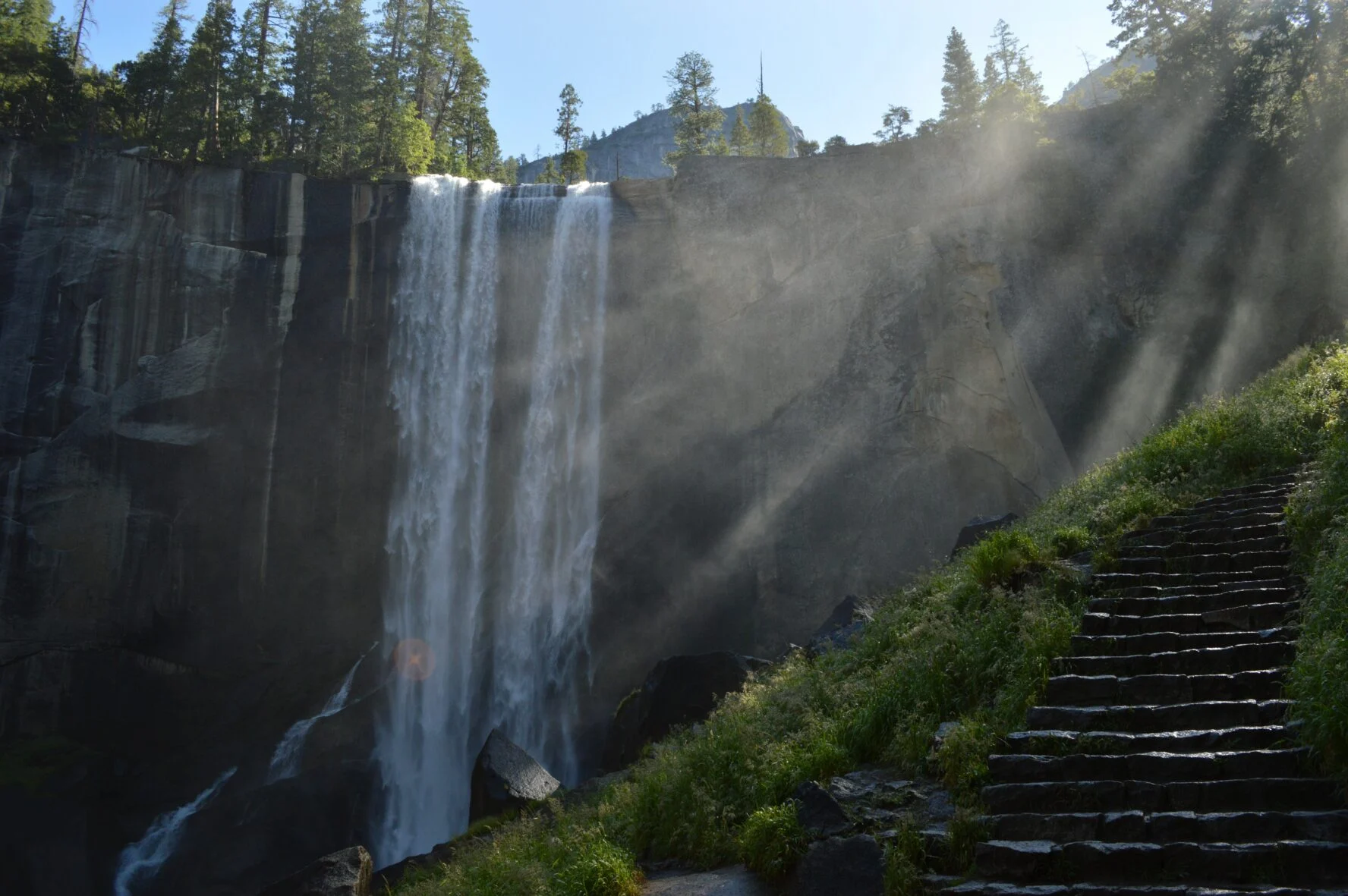
The Ultimate Guide to Yosemite National Park Hiking: Best Trails, Tips, and Essential Gear for 2025
After two decades of exploring Yosemite's trails and completing over 50 hikes throughout the park, I've crafted this comprehensive guide to help you experience the best of Yosemite National Park hiking. From iconic granite cliffs to cascading waterfalls, discover the trails that will transform your outdoor adventure and create memories that last a lifetime.
Planning Your Yosemite Hiking Adventure

Planning your Yosemite National Park hiking adventure requires careful consideration of several key factors. During my first visit to Yosemite twenty years ago, I made the rookie mistake of arriving without reservations during peak season – a lesson I'll never forget! Today's Yosemite requires advance planning, especially since the park implemented a timed entry reservation system for peak seasons.
The reservation system operates from May through September, requiring visitors to secure both park entry reservations and parking passes. I recommend booking these at least three months in advance through Recreation.gov. Beyond reservations, understanding how far Yosemite National Park is from San Francisco helps tremendously with trip logistics.
Weather plays a crucial role in your Yosemite National Park hiking experience. Spring brings powerful waterfalls but unpredictable weather, while summer offers the most accessible trails but also the largest crowds. I've found early fall to be the sweet spot – stable weather, fewer crowds, and still-flowing waterfalls. Winter hiking opens unique opportunities but requires specialized gear and experience.
Accommodation booking should happen simultaneously with your hiking plans. Yosemite Valley accommodations fill up a year in advance, but don't overlook nearby options. Consider staying in gateway communities like Mariposa or Oakhurst, which provide easier access while offering more availability and often better prices than in-park lodging.
Best Hiking Trails for All Skill Levels
After completing dozens of trails throughout Yosemite, I've categorized the best Yosemite National Park hiking experiences by difficulty level. Each trail offers unique rewards, from thundering waterfalls to panoramic granite vistas that showcase why this park captivates millions of visitors annually.
Beginner-Friendly Trails
For those new to Yosemite National Park hiking, I always recommend starting with Mirror Lake Loop. This mostly flat 5-mile trail provides stunning reflections of Half Dome and surrounding cliffs, especially during early morning hours. The trail requires minimal elevation gain while offering maximum scenic payoff – perfect for families or those testing their hiking legs.
Lower Yosemite Falls represents another excellent beginner option. The 1.2-mile round trip takes you to the base of North America's tallest waterfall, where you'll experience the thundering power and cooling mist that makes Yosemite famous. During peak flow seasons, waterproof layers become essential as the spray can drench hikers completely.
Intermediate Adventures
The Mist Trail to Vernal Falls stands as my favorite intermediate Yosemite National Park hiking experience. This 6-mile round trip combines stunning waterfalls with a challenging granite staircase that tests your endurance while rewarding persistence. I've guided countless friends up this trail, and the sense of accomplishment at the top never gets old.
Upper Yosemite Falls pushes intermediate hikers with its 7.6-mile round trip and 2,600 feet of elevation gain. The trail offers incredible valley views and gets you up close with the park's most famous waterfall. However, preparation becomes crucial – I always carry extra water and start before dawn during summer months to avoid afternoon heat.
Advanced Challenges
Half Dome represents the ultimate Yosemite National Park hiking challenge. This 16-mile round trip with 5,000+ feet of elevation gain culminates in ascending the famous cables to reach the granite summit. I've completed this hike seven times, and each experience remains uniquely thrilling and terrifying. The final cable section requires permits, proper gloves, and considerable mental fortitude.

Essential Gear and Safety Tips
Proper gear makes the difference between an incredible Yosemite National Park hiking adventure and a miserable ordeal. Over the years, I've refined my gear list through trial, error, and learning from fellow hikers' experiences. The granite terrain, elevation changes, and variable weather conditions demand specific equipment considerations.
Footwear represents your most critical gear decision. Yosemite's granite surfaces become incredibly slippery when wet, and the rocky terrain punishes inadequate shoes. I recommend investing in quality hiking boots with aggressive tread patterns and ankle support. After testing dozens of brands over the years, I consistently rely on proven performers that handle Yosemite's unique challenges.
My Essential Gear Recommendations
These boots have carried me through hundreds of Yosemite miles with exceptional grip and comfort.
Perfect capacity for day hikes with excellent organization and comfort features.
Insulated bottles keep water cold during long summer hikes in exposed granite terrain.
Essential for Half Dome cables - these gloves have saved my hands during multiple ascents.
Water management becomes critical during Yosemite National Park hiking. I carry a minimum of one liter per person for easy hikes, increasing to 3-4 liters for strenuous summer adventures. Water sources exist throughout the park, but I always bring purification tablets or a lightweight filter as backup. Dehydration causes more hiking emergencies than any other factor in Yosemite.
Sun protection often gets overlooked but proves essential on Yosemite's exposed granite surfaces. The combination of elevation and reflective rock creates intense UV exposure that can burn unprepared hikers in minutes. I wear broad-brimmed hats, apply SPF 50+ sunscreen liberally, and carry long-sleeve shirts for extended sun exposure.
Emergency preparedness separates experienced hikers from novices. I always carry a basic first aid kit, emergency whistle, and inform someone of my planned route and expected return time. Cell service remains spotty throughout much of the park, making self-reliance crucial. Weather awareness becomes particularly important, as conditions can change rapidly in mountain environments.
Seasonal Considerations and Permits

Understanding seasonal variations transforms your Yosemite National Park hiking experience from good to extraordinary. Each season offers distinct advantages and challenges that smart hikers leverage for optimal adventures. After experiencing Yosemite across all seasons multiple times, I've developed specific strategies for maximizing each period's unique opportunities.
Spring (March-May) brings Yosemite's waterfalls to peak power as snowmelt cascades down granite walls. However, this season demands flexibility as weather remains highly unpredictable. I've experienced everything from snow flurries to 80-degree sunshine within single April days. The Mist Trail becomes particularly spectacular but also more challenging due to increased water flow and slippery conditions.
Summer (June-August) offers the most accessible Yosemite National Park hiking but also the heaviest crowds. High country trails like Cathedral Lakes and Clouds Rest become accessible as snow melts from higher elevations. However, valley temperatures can exceed 100°F, making early morning starts essential. I typically begin difficult hikes by 5:30 AM during summer months to avoid dangerous afternoon heat.
Fall (September-November) represents my favorite season for Yosemite National Park hiking. Crowds diminish significantly after Labor Day while weather remains stable and pleasant. Waterfalls may reduce to trickles, but the trade-off includes perfect hiking temperatures and incredible photographic light. Many consider this the ideal time for attempting challenging hikes like Half Dome.
Winter (December-February) transforms Yosemite into a completely different world. While many high country trails become inaccessible, valley floor hikes offer unique beauty with snow-capped peaks providing dramatic backdrops. Accommodation planning becomes even more critical during winter months as many services operate on reduced schedules.
Permit requirements vary significantly depending on your chosen adventure. Day hiking requires only park entry permits for most trails, but Half Dome demands advance reservations through a competitive lottery system. I recommend entering the lottery as soon as applications open in March, with backup dates increasing your chances of success. Overnight backpacking requires separate wilderness permits available through recreation.gov.
Expert Tips from a Seasoned Hiker
Two decades of Yosemite National Park hiking have taught me countless lessons about maximizing your experience while minimizing risks and frustrations. These hard-earned insights can transform your adventure from ordinary to extraordinary, helping you avoid common pitfalls that trap unprepared visitors.
Timing your arrival makes an enormous difference in your experience. I always recommend reaching popular trailheads before 7:00 AM, especially during peak season. This strategy provides several advantages: cooler temperatures, better parking availability, fewer crowds on trails, and optimal lighting for photography. The difference between starting at 6:30 AM versus 10:00 AM can mean having waterfalls to yourself versus sharing them with hundreds of other hikers.
Trail selection should match both your fitness level and experience honestly. I've rescued numerous unprepared hikers who attempted trails beyond their capabilities, creating dangerous situations for themselves and others. Start with easier trails and gradually progress to more challenging adventures. Research trail conditions thoroughly before departing, as Yosemite's granite terrain can become treacherous when wet.
Navigation skills remain crucial despite well-marked trails. I carry paper maps as backup to smartphone apps, since battery drain and signal loss occur frequently in mountain environments. Understanding basic navigation principles can prevent dangerous situations if you become disoriented or trails become obscured by weather conditions.
Photography opportunities abound throughout Yosemite National Park hiking adventures, but I've learned to balance capturing memories with experiencing moments fully. The best shots often require patience and multiple visits to understand lighting conditions and optimal vantage points. Early morning and late afternoon provide the most dramatic lighting, though midday shots can work well for waterfalls where mist creates natural diffusion.
Leave No Trace principles become especially important in Yosemite's fragile granite ecosystem. I pack out all trash, stay on designated trails, and camp only in approved areas. The park's popularity means that small impacts multiply quickly across millions of visitors. Practicing responsible hiking ensures that future generations can enjoy the same pristine wilderness experiences that have captivated visitors for over a century.
Building connections with fellow hikers and park rangers enhances every visit immeasurably. Rangers possess incredible knowledge about current conditions, wildlife activity, and hidden gems that guidebooks miss. I always stop to chat with rangers when possible, and some of my most memorable Yosemite National Park hiking experiences resulted from their recommendations for off-the-beaten-path adventures.
Conclusion
Yosemite National Park hiking represents one of America's greatest outdoor adventures, offering experiences that range from gentle family strolls to life-changing challenges that test your limits. After twenty years of exploring these granite cathedrals and cascading waterfalls, I remain constantly amazed by new discoveries and perspectives that each visit brings.
The key to successful Yosemite adventures lies in thorough preparation combined with flexible expectations. Weather, crowds, and trail conditions can change rapidly, but proper planning and appropriate gear ensure that you can adapt to whatever conditions arise. Remember that every expert hiker started as a beginner – your first steps on Yosemite's trails mark the beginning of a lifelong journey of discovery and personal growth.
Whether you're planning your first visit or returning for another adventure, approach Yosemite National Park hiking with respect for the environment, honest assessment of your abilities, and openness to the transformative power of wild places. The granite peaks, thundering waterfalls, and ancient forests that have inspired generations of visitors await your discovery.
Start planning your adventure today by securing permits, gathering appropriate gear, and studying trail conditions. Your Yosemite National Park hiking journey promises memories that will last a lifetime and perhaps ignite a passion for wilderness exploration that will enrich your life for decades to come. The mountains are calling – it's time to answer that call and experience the magic that awaits in America's most beloved national park.
Ready to Start Your Yosemite Adventure?
Explore more incredible hiking destinations and get expert tips for planning your next outdoor adventure. Our comprehensive guides help you discover the best trails, essential gear, and insider tips for unforgettable experiences.

